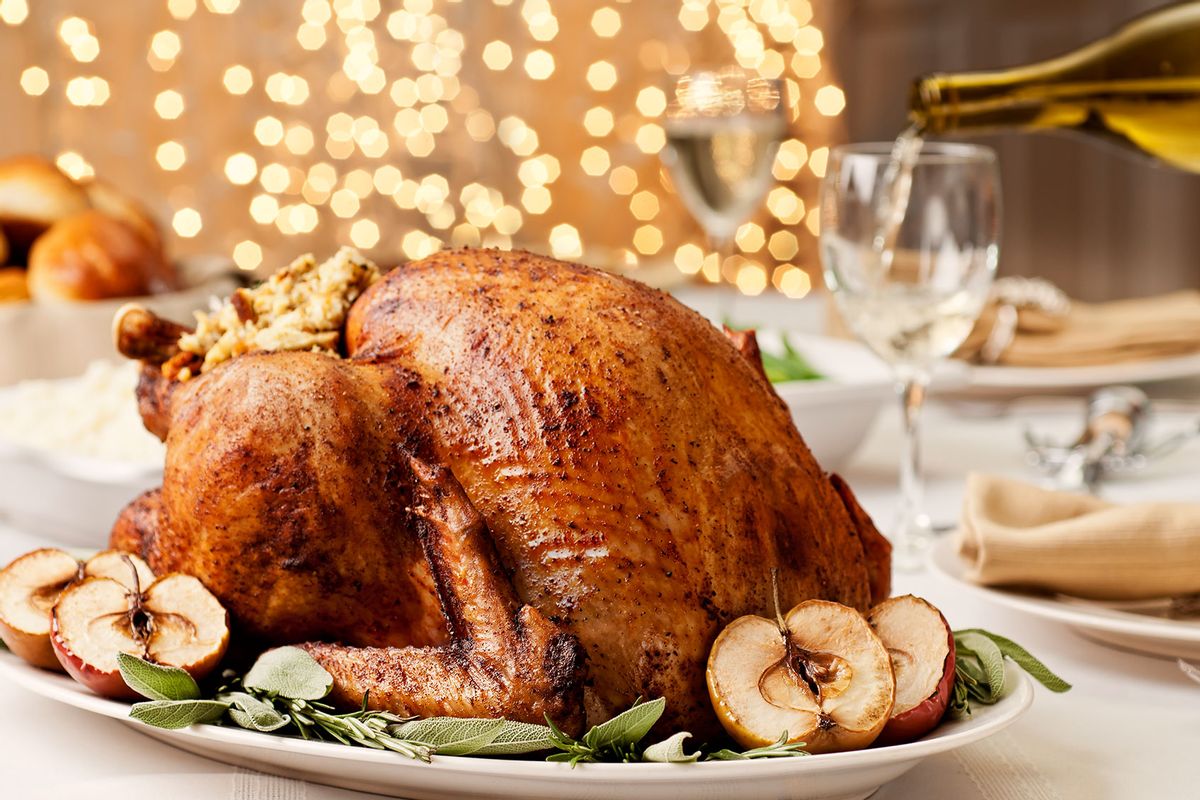How to properly — and safely — defrost a frozen turkey for your holiday feast

Ah, Thanksgiving! Celebrated by millions, this storied holiday is full of food, family, football, history (explained here by Christina Ricci’s always iconic Wednesday Addams) and parades. And it’s capped off by tons of turkey and tons of leftovers.
No matter if you’re fixing a deep-fried turkey, a turducken, turkey breasts or a spatchcocked turkey, this beloved protein is guaranteed to play the starring role on any holiday tablescape.
For those who opt for a roasted, whole bird, the general options — beyond the cooking method and to brine or not to brine — generally boil down to “fresh or frozen?” If you’ve carved out some room in your fridge for a fresh turkey, all is well. If, however, you have a rock-hard turkey currently sitting in your freezer and you’re unsure of where to start or how to turn said bird into a swoon-worthy main course, Salon Food is here to help.
Before we get into the nitty-gritty, let’s pause for a moment to consider food safety. While it’s always imperative to abide by food safety rules, it’s perhaps even more pressing to do so if you’re feeding a massive group of your closest family and friends all at once.
While defrosting any food item could take place in a multitude of places, one spot is generally the cleanest, safest and (typically) simplest: the refrigerator. The temperature is controlled, defrosting can be gradual and consistent and you can collect any residual defrosting moisture or liquids in a large roasting rack, sheet tray or wherever you were planning on actually cooking your turkey.
The U.S. Department of Agriculture (USDA) advises allowing “approximately” 24 hours for every 4 to 5 pounds of bird, a great ratio and tool in which to plan your Thanksgiving feast. If you’re making a big ol’ bird for a ton of people, be mindful that this may take a few days. The USDA further states that the refrigerator method is “the safest.” (If you’re a briner, The Kitchn notes that you can actually begin the brining process while the turkey is still quasi-frozen.)
Want more great food writing and recipes? Subscribe to Salon Food’s newsletter, The Bite.
If you’re frenzied on Thanksgiving morning because your turkey is in the same temperature zone as Jackie at the end of the penultimate episode of Season 1 of Yellowjackets, the USDA has some suggestions. There’s also a microwave option (though I feel like most turkeys are too big for the average microwave?) and a “cold water” thawing method, which involves fully submerging the turkey in cold water that is changed in 30 minutes increments.
In this method, leave the turkey’s original plastic bag or covering on as it slowly thaws. You don’t want a nude, raw turkey just chillin’ unencumbered in your sink due to the fact that some of the “juices” from the raw meat may potentially cause food-borne illnesses or other bacterial issues. Let’s try to stay as far away from those as possible.
Can I cook a frozen turkey?
According to the USDA, you can safely “cook a frozen turkey.” This, however, would increase the cooking time. “A solidly frozen turkey will take at least 50% longer to cook than a thawed turkey,” the agency writes. “If your turkey is only partially frozen, remember that it will take a bit longer to cook.”
Also, the flavor definitely may not be ideal, especially since brining or seasoning an entirely frozen turkey is bound to be an (unnecessarily challenging) feat. Don’t leave a fully thawed bird in the fridge for any longer than two or three days, and if you use the microwave or cold water/sink method, cook the turkey immediately thereafter.
Do not do the following
Don’t let a frozen turkey thaw out on the counter for a few days, haphazardly leaking questionable liquids all over the kitchen and floor. Also, don’t leave a turkey outside to defrost in the sun.
The USDA shares a few additional no’s: Don’t thaw a turkey by “throwing” it on “the counter, in the garage or on the back porch.” Don’t thaw one using your dishwasher (say what?!). Don’t merely let the turkey thaw willy-nilly in a bag of some sort.
One great tip for knowing when your bird is fully defrosted? There are little to no ice crystals inside the turkey.
One final note to consider
Be sure to scavenge about the turkey’s cavity in order to remove the little baggy containing the neck and other giblets and prizes (usually the gizzard, heart and liver). This bag should probably not cook in the oven for four-plus hours. If you forget and the plastic bag is intact when you pull the turkey out of the oven, you should be fine. If, however, it’s literally melted into the inside of the turkey, it may be best not to serve the turkey whatsoever — yes, really.
Happy holidays to all!
Read more
about Turkey Day

